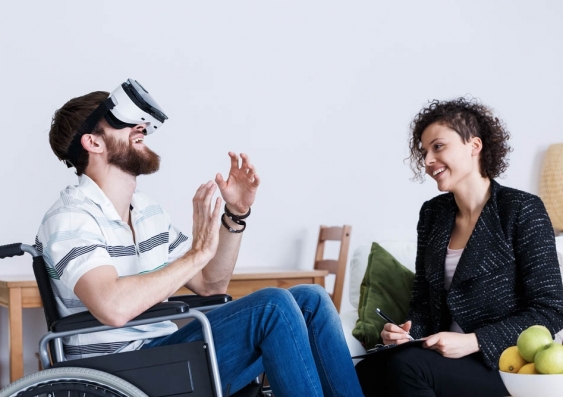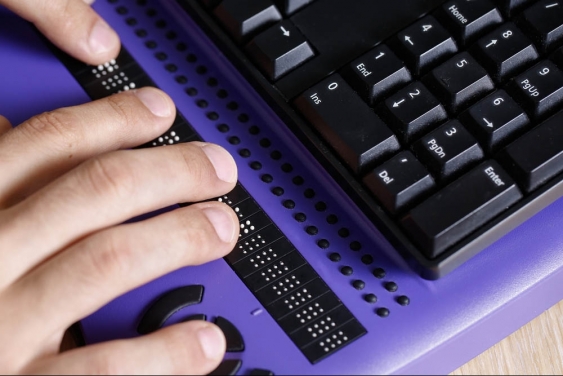New Disability Innovation Institute will transform lives
A new institute focusing on disability will harness research and innovation across all UNSW faculties and disciplines.
A new institute focusing on disability will harness research and innovation across all UNSW faculties and disciplines.

Disability researchers at UNSW Sydney are putting the finishing touches to a ground-breaking initiative to help transform the lives of people with disability by harnessing research and innovation across all faculties and disciplines.
The Disability Innovation Institute at UNSW, to be launched this year, will be a platform to combine disability studies with STEM (Science, Technology, Engineering and Medicine) and HASS (Humanities and Social Sciences) research to design accessible and inclusive working, living and learning environments, generate innovative technologies and create inclusive law, policy, services, markets and communities.
The interdisciplinary institute will collaborate with people with disability to identify, understand and research solutions to the practical challenges experienced by people with disability. A Disability Inclusion Maker’s Exchange will connect scholars, makers and users to develop long-lasting solutions to the practical challenges experienced by people with disability.
Rosemary Kayess, Visiting Fellow at UNSW Law and Senior Research Fellow at UNSW’s Social Policy Research Centre (SPRC), says the institute will go well beyond merely improving physical access for people with disability.
“It will cover human rights law, how to embed disability into the design of STEM research, architecture and the built environment, how people engage, how we communicate, how we transact,” says Kayess.
“This is an area where nobody really claims global leadership and that’s why this has such enormous potential.”
About one in five Australians – 4.2 million people or 18.5% of the population – identify as having a disability. That number will likely to grow as Australia’s population ages, with one in two people predicted to develop an age-related disability over the next 20 years.
“Right now, we have almost 20% of the population who have not been able to engage with the community on an equal basis,” Kayess says. “That is an issue of inequality for people with disability but it also means we lose out on the notion of diversity and richness of difference.”

Photo: Shutterstock
Kayess says the holistic linking of STEM with other faculties – Law, Arts and Social Sciences, Art and Design, Built Environment – to focus on disability innovation makes the institute unique.
“It’s not about social work, it’s not about medicine, it’s not about fixing people. It will have some of those things in it but overall it’s about harnessing innovation through collaboration to build an inclusive community,” she says.
SPRC’s Professor Karen Fisher says innovation is stimulated by unexpected connections and by necessity.
“Disability is one area where this happens,” Fisher says. “But these innovations can have the potential for a much wider impact and use across society. Smart home technology is a good example. Another is electronic voting, which was developed for accessibility but is now extending to the rest of the electorate.”
Associate Professor Leanne Dowse, from UNSW Arts & Social Sciences, says the institute will look inwardly as much as outwardly: “It will allow us to build on inclusive learning initiatives within the University as well as focus on sharing UNSW’s disability innovation externally through its focus on knowledge exchange.”
Fisher says that five of Australia’s Group of Eight universities have disability initiatives of some kind but no university-based initiative in Australia offers the scale and complete cross-faculty, inclusive disability focus that government and business are seeking.
“The institute offers the opportunity to provide a unique connection between UNSW scholars, community, industry, services, government and practitioners to fully utilise the creativity and innovation at our disposal and transform the lives of millions of people with disability,” she says.
“And the institute fits perfectly with the focus of UNSW’s 2025 Strategy on global impact, social engagement and building high-quality interdisciplinary research, as well as the University’s Grand Challenge on Inequality.”